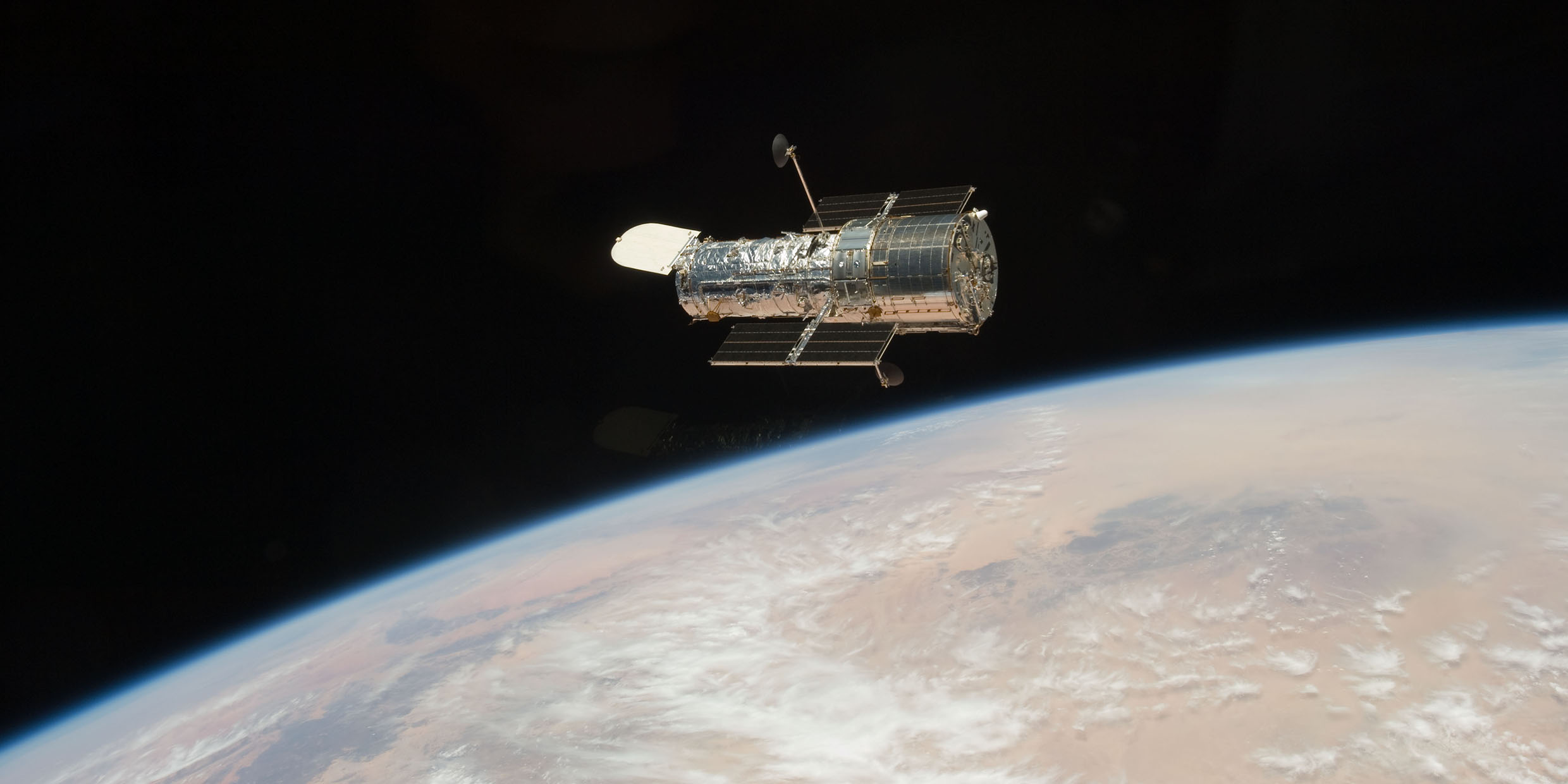Originally published 21 November 1994
By now, everyone has heard about the Hubble Space Telescope’s new measure of the age of the universe.
Younger than we thought, it turns out. Eight billion years old, plus or minus a billion years or so.
The trouble is, astronomers think they see stars twice that old. Clearly, the universe cannot contain stars that are older than the universe itself. Something must be wrong.
What might it be? Hard to say. Maybe the new measurement is flawed. Maybe astronomers overestimate the age of the oldest stars. Maybe they are partly wrong on both counts.
It is important to realize that both age calculations — of the universe and of the oldest stars — depend on large components of theory. If further observations show the data to be truly inconsistent, then theories will have to be revised.
Theories of how stars burn — the basis for calculating their ages — appear to be more firmly grounded in observations than theories for the Big Bang. It is the latter, therefore, that will now get the closest scrutiny.
The most widely accepted version of Big Bang cosmology is called the inflationary model. According to this model, as the universe expanded during the first instant of its history, it experienced a brief growth spurt that vastly increased its size. A volume of space smaller than a proton expanded within a tiny fraction of a second to become billions of light-years in diameter.
Since that early inflationary spurt, the universe has continued to expand in a more stately fashion.
The inflationary model resolves some theoretical and observational problems with a non-inflationary Big Bang.
However, the model predicts a higher mass density for the universe than has so far been observed.
If the early inflationary spurt didn’t occur, then the universe need not be so young after all, and the inconsistency between the age of the universe and the age of the oldest stars is not so stark.
I’d be sorry to see the inflationary model abandoned. I always liked the idea of a Big Bang universe that takes a sudden squirt outward like shaving cream from a pressurized can.
What appeals to me about the model is the bizarreness of it all. It stretches our imaginations, challenges our credulity. The inflationary model is science that rivals the mystic’s extravagance of vision.
The 14th century mystic Julian of Norwich tells us that Christ appeared to her and placed in her hand a little thing the size of a hazelnut. She looked at it and wondered what it might be. He answered: “It is all that is made.”
Presumably, Julian of Norwich would have had no trouble believing in an inflationary universe.
And there’s more. Check out the article by Russian cosmologist Andrei Linde in the November [1994] issue of Scientific American.
With Alan Guth of MIT, Linde is one of the originators of the inflationary model. In the article he describes a curious feature of certain versions of the theory: Tiny regions of a universe can suddenly inflate to produce other universes.
New universes budding like polyps from the old, bubbles inflating from bubbles, potentially infinite in number. Linde proposes a frothy meta-universe in which the universe we observe — with its billions of galaxies — is but a tiny part of a single bubble.
He even considers the possibility that a milligram or so of matter might be compressed in the laboratory to a density such that quantum fluctuations ignite inflation, giving rise to a new universe that pops out parallel to our own, vast in extent, perhaps eventually evolving inhabitants (and cosmologists) of its own.
Indeed, maybe our own universe was engineered by a physics hacker in a precedent universe.
Don’t get me wrong. I don’t take this bubbling universes stuff too seriously, and neither should you. Scientific theories are held with varying degrees of certainty, and it’s good to keep the differences in mind.
Cosmologists are virtually certain that our universe is very old and very big on the human scale: billions of years old, and big enough to contain tens of billions of galaxies.
They are reasonably confident that our universe is expanding outward from an explosive beginning.
They are more or less enamored with inflation because it helps explain some otherwise thorny problems of Big Bang cosmology.
And they muse whimsically about new universes budding from old because the equations of physics, played with in a certain way, give them leave to do so.
In the end, only observations will tell truth from fancy, and that’s why cosmologists (and cosmology watchers) welcome the new Hubble observations — regardless of their paradoxical implications.
In the meantime, we can revel in the vision of a universe that grows more copious, more extravagant, more mind-inflating with each passing generation.
Julian of Norwich asked: “What is the use of praying if God does not answer?” Cosmic curiosity is a kind of prayer. In the light of distant stars, caught with a magnificent instrument lofted into space by a questioning creature, God answers.
Further observational measurements by the Hubble Space Telescope and others have since refined the estimated age of the universe to roughly 13.8 billion years. As of 2021, the Inflationary Model of the early universe remains favored by cosmologists. ‑Ed.



